The Cervical Spine (Neck)
This month’s top to toe series post is all about the neck or the cervical spine (csp) in fancy terms. An area of the body osteopaths see frequently for varying reasons. We will focus on the relevant anatomy and some presentations and treatment methods used to reduce pain and tensions.
Anatomy of skeletal structures and ligamentous connections
The neck is composed of 7 vertebra, the upper 2 vertebra have a slightly alternate design due to their function. In osteopathy we follow the principle of ‘structure governs function’ and this is because the body is designed in certain ways to withhold stresses and strains day to day life places on its structures.
C1, the very upper vertebra, otherwise known as the ‘Atlas’ is a discal shaped bone, with flat intra articular surfaces facing up to where the base of the skull (occipital bone) rests on the spine (figure 1).

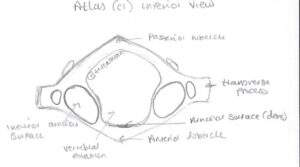
Figure 1. Illustration of the anatomy of the C1 vertebrae (Axis).
C2, or the ‘Axis’ is a narrower structure with an upward facing prominence that tucks inside the C1 vertebra. Both the atlas and axis lack a vertebral body allowing the majority of motion through the head and neck (Figure 2).

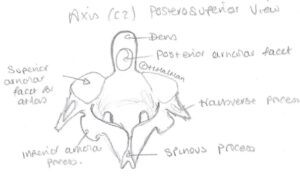
Figure 2. Illustration of the anatomyof the C2 vertebrae (Axis).
C3-7, the remaining vertebra of the csp are similarly structured, with vertebral discs located between each one. The vertebral bodies slightly increase in diameter to account for the balance and weight translation throughout the spine and in the case of the cervical vertebra, stabilising the skull (Figure 3).
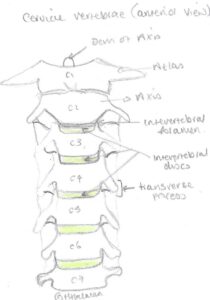
Figure 3. Illustration of the whole cervical spine with intevertebral discs.
Each vertebra has a spinous process, a bony protuberance on the posterior surface which provide attachment points for the ligaments and muscles (if you place your hand on your spine, those little bumps you feel all the way down are the spinous processes), intra articular surfaces, known as zygapophyseal joints or facet joints, which you may hear your osteopath mention if you have been experiencing neck pain. These surfaces are located at either side of the vertebrae and have a cartilaginous layer on both sides (top and bottom) to allow easy gliding through movements. The facet joints also have a ligamentous capsule providing support to the joint locally (figure 4).
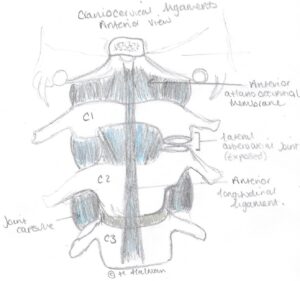
Figure 4. Illustration demonstrating location of the facet jonts and ligametous capsules.
We then have long ligaments spanning the length of the joints to provide extra stability to the entire column (Figure 5).
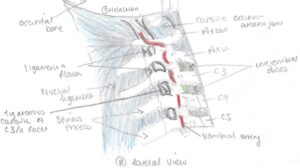
Figure 5. Illustration showing lateral view of the vertebral colum and the arrangement of ligamentous structures.
Muscular structures
There is a huge muscular structure so i will only focus on the more common areas seen in clinics, of course all muscle structures are relevant in diagnosis and treatment but i would be here all day listing them.
To name a few and labelled below, common muscles we see with discomfort are, the upper trapezius, sternocleidomastoid (SCM), scalenes, platysma, levator scapular, cervical erector spinae and the sub occipitals (these have been spoken about more so in the headaches blog post). (Figure 6).
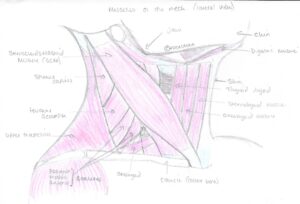
Figure 6. Illustration of the muscles of the neck.
Nerve structures and blood vessels
Between each vertebra a nerve root protrudes through the foramen (small spaces formed by two bones connecting and leaving a gap). The nerve roots from between the cervical vertebrae form the brachial plexus. I will go into more detail about this in another post.
The phrenic nerve stemming from c3,4,5, travels down the sides of the neck to the diaphragm, the vagus nerve also runs down the sides of the neck within the carotid sheath with the carotid artery and jugular vein both of which are two of the major blood vessels within the neck (figure 7).
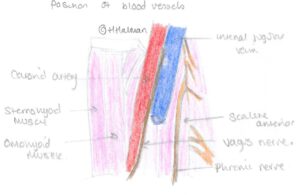
Figure 7. Illustration of the location of major blood vessels and nerve structures in the neck.
Common presentations
We often see patients who come to us with mild to severe neck pain, some of which struggle to move their head in certain directions.
Pain can be caused by a build up of many lifestyle factors so it is important for osteopaths to understand the stresses and strains put on the individuals body. This can include, working routine/ set up, weight training, general stress and sleeping position to name a few, none of these things are bad for you they may just contribute to why you experience pain.
It is also important to understand the history and whether our patients have experienced neck pain before and or had a trauma, such as a sporting injury or car accident.
Following trauma it is important patients get the right care, trauma can be from car and motor accidents, sporting injuries or just day to day accidents.There is risk of fracture in some of these scenarios which is a red flags for osteopaths, so we will refer to the hospital if necessary.
Once we have established if the bony structures are in tact, we will assess for discal (it is possible to have disc injuries in the neck, osteopaths will screen carefully for this and advise appropriately.) ligamentous and muscle injury. This is something we see and carefully treat, providing advice and exercises to regain function and reduce pain.
Pain can occur for many reasons and it doesn’t necessarily have to be due to a trauma or injury. Sometimes if we move in a certain way or sustain one position for a long time, the small joints (facet joints) can become irritated and inflamed. As a result the joint becomes stiff and painful and the muscles in the area tighten up to protect the joints. This can be very painful but can also present as a low grade discomfort with certain movements.
Muscle strains and tightness can also cause pain in the neck, this can be due to overworking muscles during a workout, a build up of tension from sitting at a desk or just general tension from day to day activities.
Treatment
Treatment includes assessment of joints, discs, muscles and ligaments and we will perform special tests to identify which structures are causing the pain. Once a diagnosis is established gentle mobilisations of the joints, soft tissue massage work and stretching are some examples of how your osteopath may chose to approach the presenting conditon, if appropriate. If the patient is suitable we can often do manipulations of the joints to encourage range of motion, reduce pain and ease muscle tension. Your osteopath will explain your treatment and consent will be asked throughout.
If you have been experiencing neck pain, book in to see your local osteopath and they will assess and guide you in the right direction.
Take Care,
Hermione

Leave a Reply
You must be logged in to post a comment.